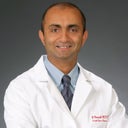Posted underTummy Tuck q&a
I've Had a Hematoma for 4 Months. Above the Belly Button and Upper Stomach That Bulges Out. Will Lipo Help This Area? (photo)
I had a hyperthrophy scar revision under my breast n back and a full TT 4 months ago. Same night, I had blood leaking for hours in my back. Doctor removed the blood clot, my breast turned black! My top stomach was bulged. He treated me for a seratoma for 3 weeks after drains were removed, twice a week for aspiration. He sent me for an ultrasound, tells me I have a resolving hematoma between skin and muscles. He suggest lipo. Will this help my bulge or wrinkle me more? Do I need scan, a revision?
Answers (10)
From board-certified doctors and trusted medical professionals
Dr. Bhupesh Vasisht, MD

Dr. Bhupesh Vasisht, MD
Board Certified Plastic Surgeon
Answer
Dr. Kenneth Hughes, MD

Dr. Kenneth Hughes, MD
Board Certified Plastic Surgeon
Answer
Dr. Robert Brueck, MD
Dr. Robert Brueck, MD
Board Certified Plastic Surgeon
Answer
Dr. Richard Wellington Swift, MD
Dr. Richard Wellington Swift, MD
Board Certified Plastic Surgeon
Answer
Dr. Philip E. Fleming, MD
Dr. Philip E. Fleming, MD
Board Certified Plastic Surgeon
Answer
Dr. Jourdan Gottlieb, MD
Dr. Jourdan Gottlieb, MD
Board Certified Plastic Surgeon
Answer
Dr. Richard P. Rand, MD, FACS (retired)
Dr. Richard P. Rand, MD, FACS (retired)
Board Certified Plastic Surgeon
Answer
More Tummy Tuck Questions
See all Tummy Tuck Q&AWE SEND PRETTY
EMAILS
What’s trending? Who’s turning heads? Which TikTok myths need busting? We’ve got you. No fluff, no gatekeeping—just real talk. Get our free, unfiltered newsletter.
